Studies in emptiness
“Beyond the edge of the world there’s a space where emptiness and substance neatly overlap, where past and future form a continuous, endless loop. And, hovering about, there are signs no one has ever read, chords no one has ever heard.”
—Haruki Murakami, Kafka on the Shore
To call Eland Ward’s works “rather large drawings” actually is an understatement. The show at Space 1026 consists of seven drawings by this Brooklyn-based artist in his late 30s, most of them a good seven feet tall and five feet wide—the largest is 10 feet square. And their size is important, because the pieces themselves for the most part are reductionist. They portray snapshots of daily life, which run the gamut from urban to suburban to rural scenes, although not any landscape that you have ever seen or imagined. I wouldn’t even call them idiosyncratic. They are truly odd, in many ways disturbing, and highly engaging. Yet despite their size, the images all include considerable volumes of empty space.
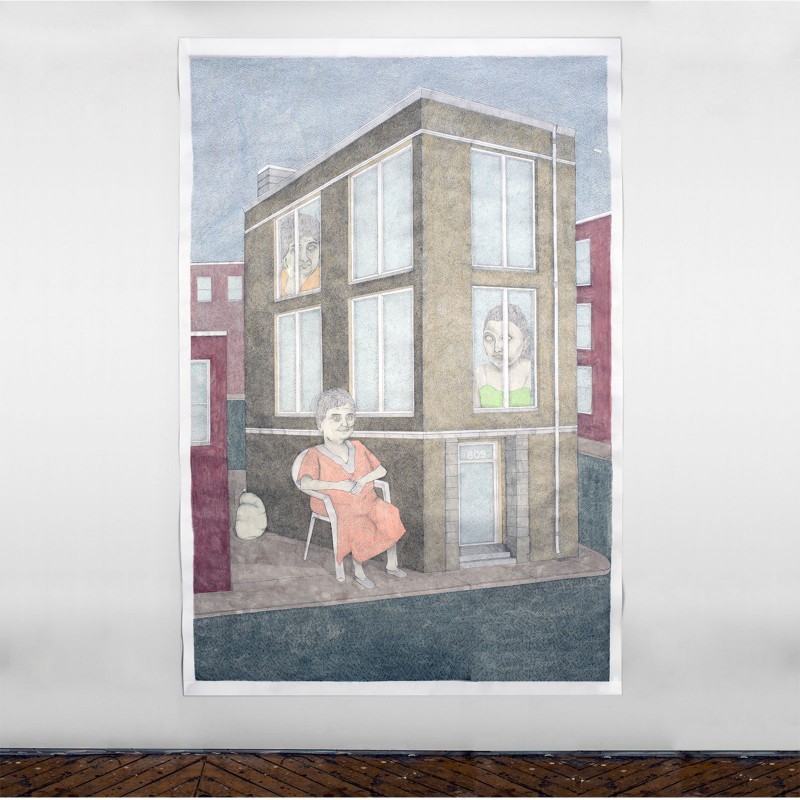
Mr. Ward has spent the last six years producing this series, and the drawings reflect years of meticulous, painstaking, pointillistic work, some of it involving complex repeat patterning. The seven are all drawn on paper with pencil and ink, with overlays of gouache washes, and they have a flat, illustrative quality. Because they are works on paper, and huge, and hung unframed on walls, there is a slight wave to the paper support, which can be distracting. The detail, however, is really impressive: imagine the detail of the piece “Pool” included here, but on a large scale.
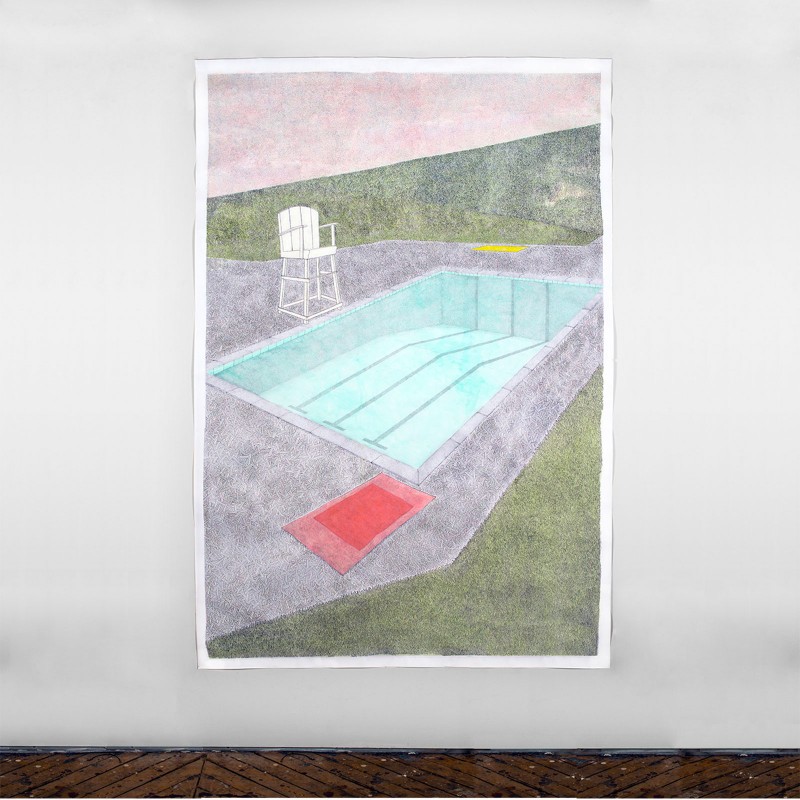
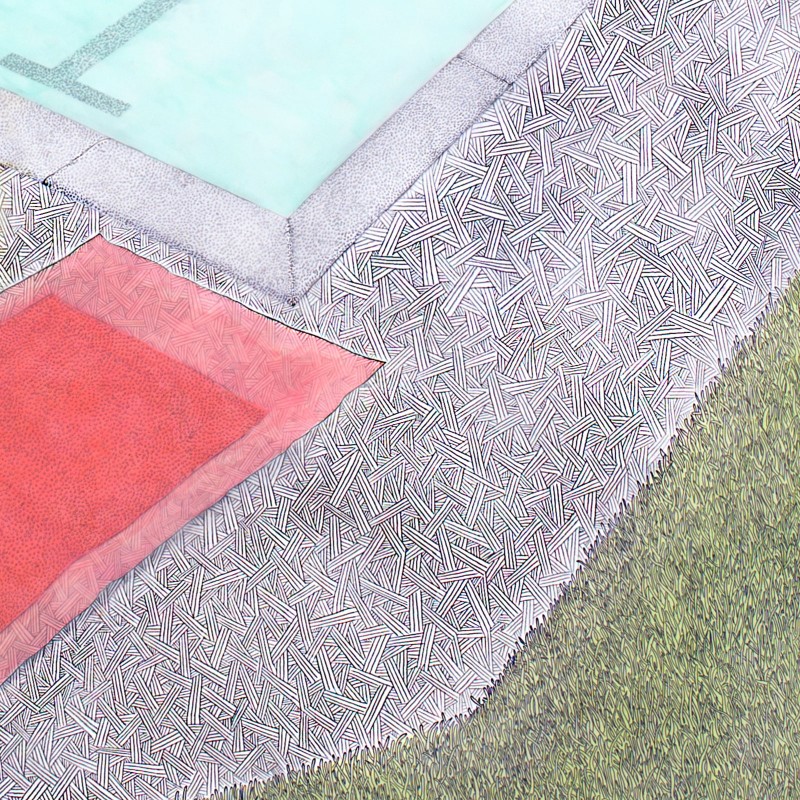
An empty pool on a barren landscape
In the full piece, also pictured here, of course, the pool is empty of water, and it is slapped on a barren landscape. Everything is out of proportion. Remember this piece measures about seven by five FEET. It basically dominates an entire wall. The lifeguard stand, the colorful beach towels, are unoccupied. Why are there beach towels there anyway? People sunbathing beside an empty pool? And where have they disappeared to? The scene is lifeless and dull, but its bleakness is mitigated to a degree by muted, enlivening gouaches.
For an interesting comparison, I’ve included an image here of “Pool” by another Brooklyn-based artist, Chris Ballantyne. Note that Ballantyne’s is a painting, acrylic on paper, and it is far smaller than Ward’s, a mere 12” x 16”. Ballantyne is a more experienced painter than Ward, and his work is more stylized and elegant, but both of their pools are artifacts, symbols of civilization’s cruel mark on the environment. Comparing them to David Hockney’s well-known paintings of swimming pools from a generation earlier, the loss of the optimism that characterized Hockney’s era is striking. Ward’s piece reminded me of a Twilight Zone episode in which all living beings disappear from Earth other than the occupants of an airplane, who, mystified, travel from deserted airport to deserted airport searching for an explanation. In a way, all of Ward’s drawings are ambiguous, mysterious, indeterminate, and searching for an explanation.
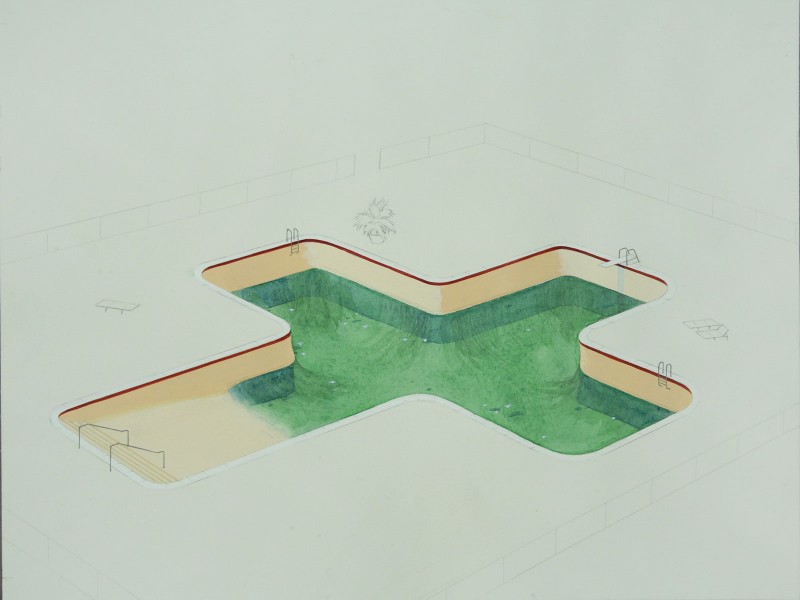
What happened to the people? Well, they appear in Ward’s other drawings. They are at the supermarket. They are gardening. They are sitting in front of their houses. They are having dinner. They are tending to chickens. But when they are together, they do not communicate much, if at all. Their expressions are blank and disassociated. They seem frozen in a moment. Things feel amiss, but you can’t quite figure out how or why.
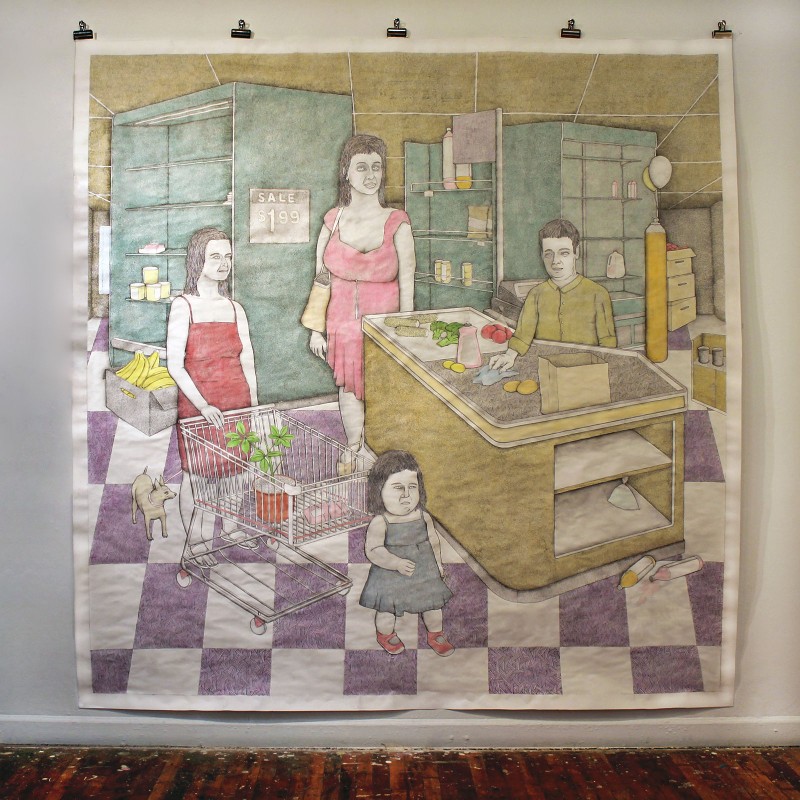
In “Grocery Shopping,” notice the almost empty shelves, the baby bottles on the floor, the doggie and the strange people, especially the child, each captured in their own private universe. This, like all of Ward’s work exhibited here, comes out of a strange time and place. It’s certainly not Whole Foods, but perhaps some dream-version of Kansas in the middle of the 20th century. Ward has suggested that his work may be understood “as commentary on the inconsequential activity that constitutes the majority of our waking hours under current conditions of production and consumption.”
An urban landscape gone awry
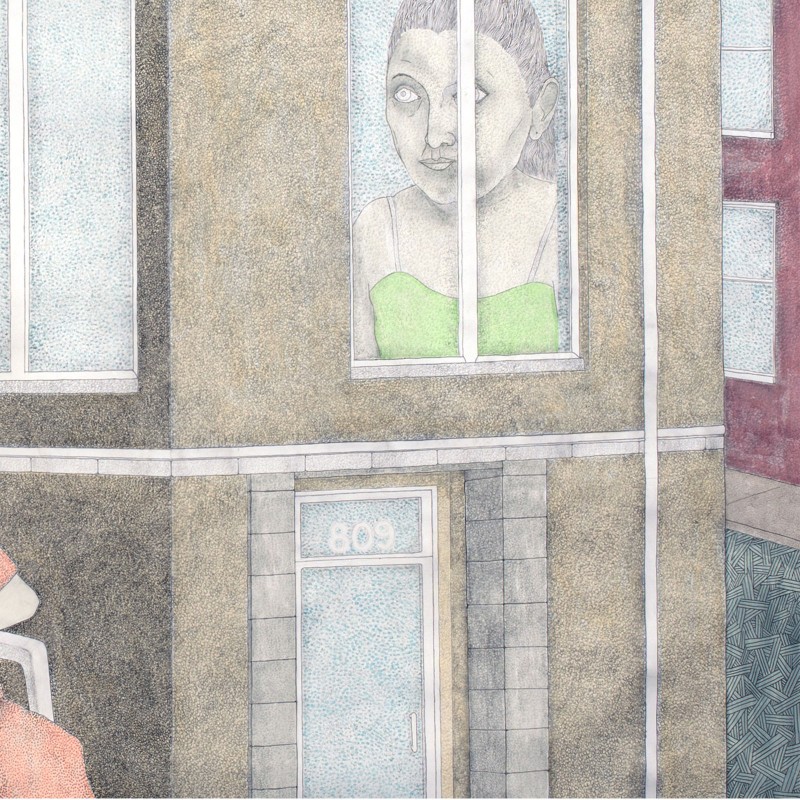
Ward’s “Shelter” is, I thought, the most provocative piece in the show. I’ve included an image with a separate detail shot of the piece. The architecture is so strange. Is it meant to be a parody of urban life? Look at the clothing: the woman’s housedress. Everything again is out of place and out of proportion. And what do you make of the two figures in the windows? Ward’s version of “lonely men in shirtsleeves, leaning out of windows”? I don’t know whether this is an urban landscape gone awry, or its psychological equivalent. Again Ward’s words: “I attempt to avoid establishing an evident narrative in the drawing, relying on a degree of ambiguity to lend it a sense of mystery, or an air of indeterminacy. It is this dynamic, or tension, between the evident and the unknown, the conscious and the unconscious, that informs my drawings.” This work is part Hopper and part Arshile Gorky (remember his “Self-Portrait with Mother”), with an overlay of Chris Ware. Imagine that if you can.
Ward was born in San Francisco to a Cuban mother and an American father and raised primarily in Albuquerque, New Mexico. He received a BFA from the California College of the Art and is currently taking a break from a graduate program for Science & Technology Studies at CUNY, in New York.
A series of rather larger drawings will be on display at Space 1026 through Feb. 25, 2016.








